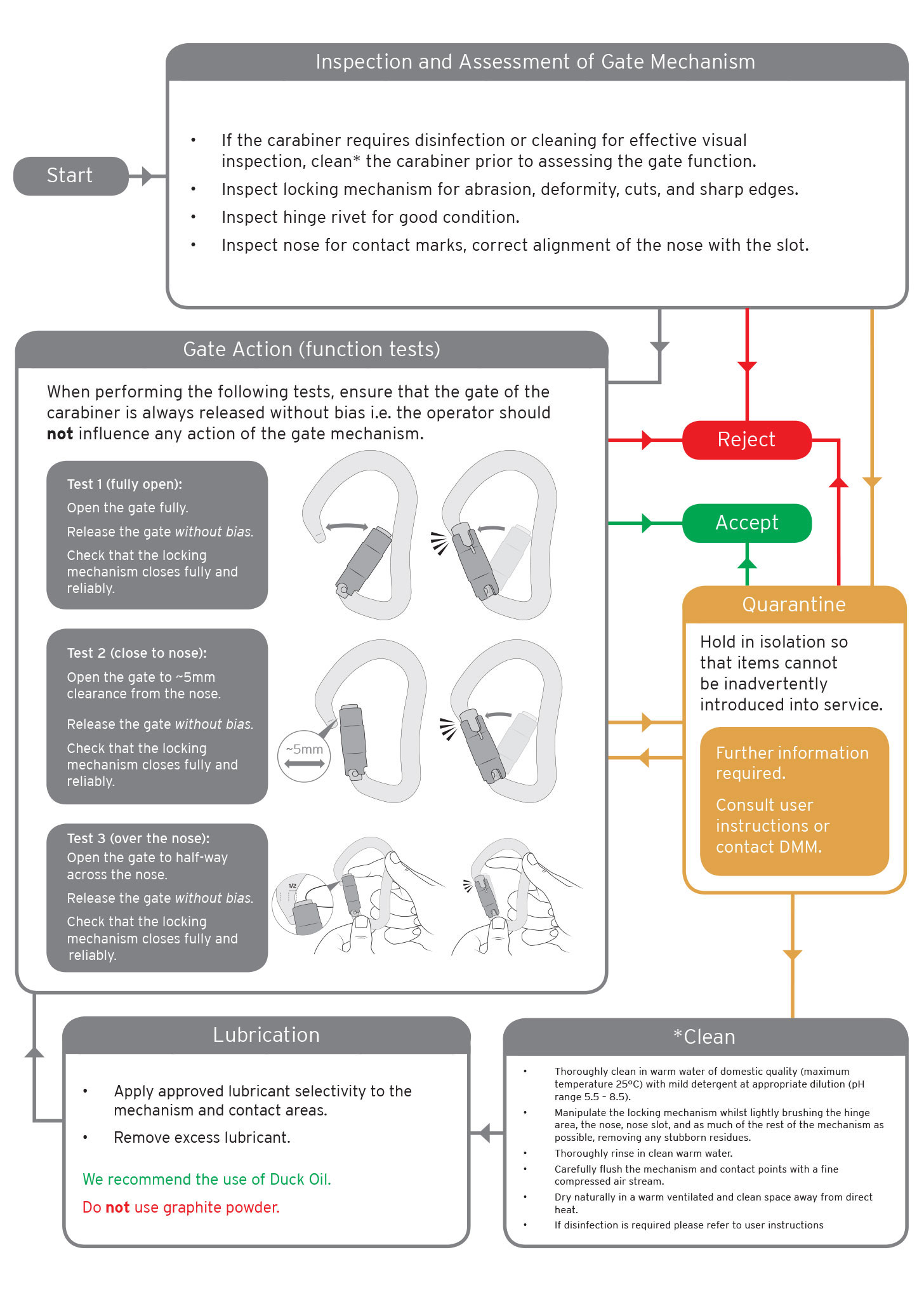Inspection & maintenance of auto-locking gates
Regular maintenance of carabiners is necessary to ensure their proper function. We’ve separated the maintenance process into three parts; Inspection, Cleaning, and Lubrication. Each step is critical to the process, so don’t just skip to the end!
Inspection of Auto Locking Carabiners
The first of three videos in our “Maintenance of Auto Locking Carabiners” series walks you through the inspection process for the carabiner body and locking mechanism. You will also learn about the parts and construction of the locking mechanism.
Cleaning of Auto Locking Carabiners
Here we describe the cleaning process. Jump in and learn a trick that helps dislodge debris from the locking mechanism.
Lubrication of Auto Locking Carabiners
This video shows you how and where to lubricate the locking mechanism. Also learn what lubricants we recommend… a couple drops will do the trick.
Below you'll find a step-by-step 'walk-through' to aid with the inspection and maintenance of DMM auto-lock carabiner gate mechanisms. Following on from a visual and tactile assessment, there are three gate action (function) tests described, to ensure that the gate closes fully and reliably. A non-silicone based lubricant such as Duck Oil is recommended to reduce friction at the hinge rivet, within the mechanism and contact areas.
As always, if you have any doubts about the functionality or integrity of a carabiner, take it out of service and seek advice. A downloadable PDF of this guide is available either by clicking directly on the image below or the icon at the foot of the page.







